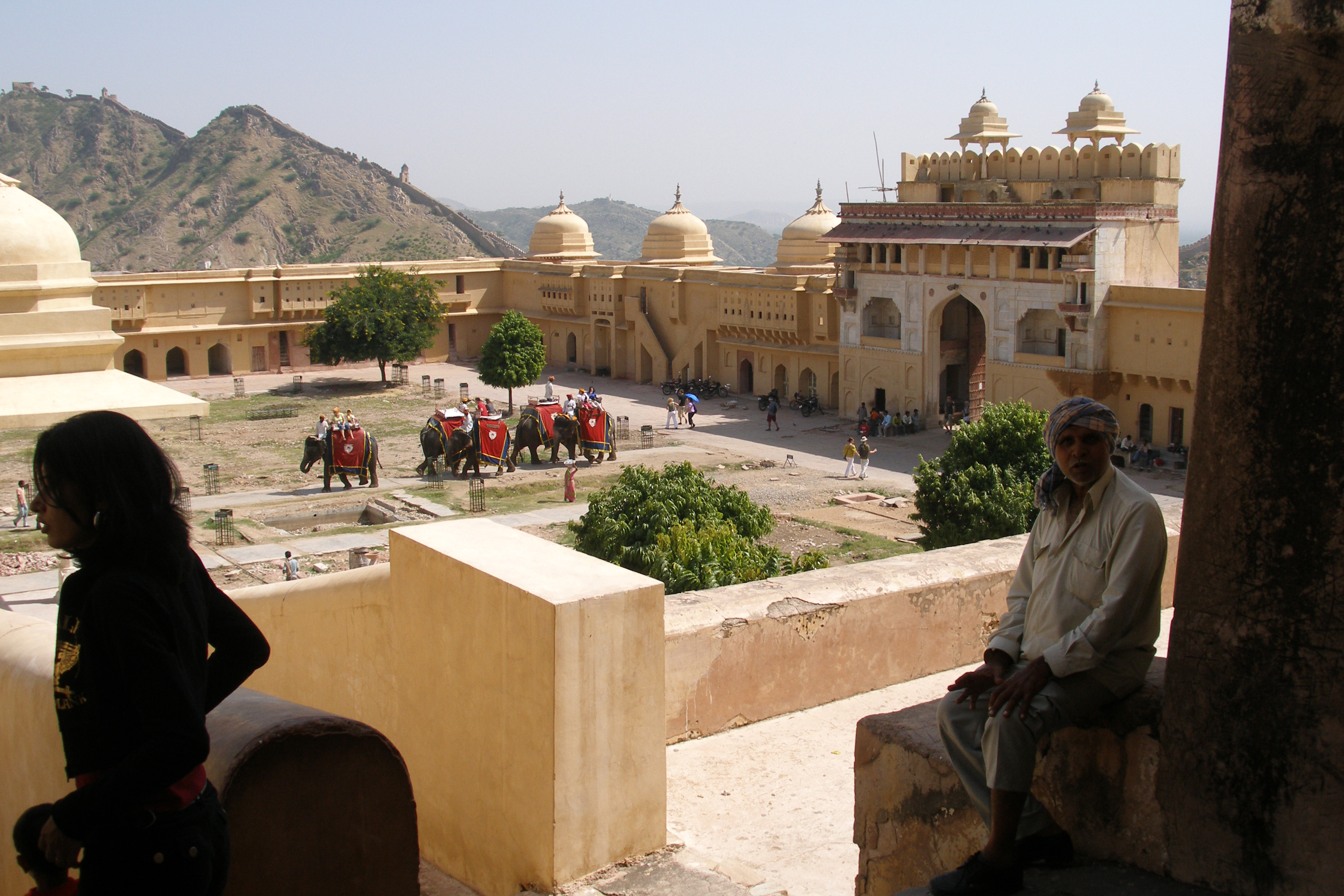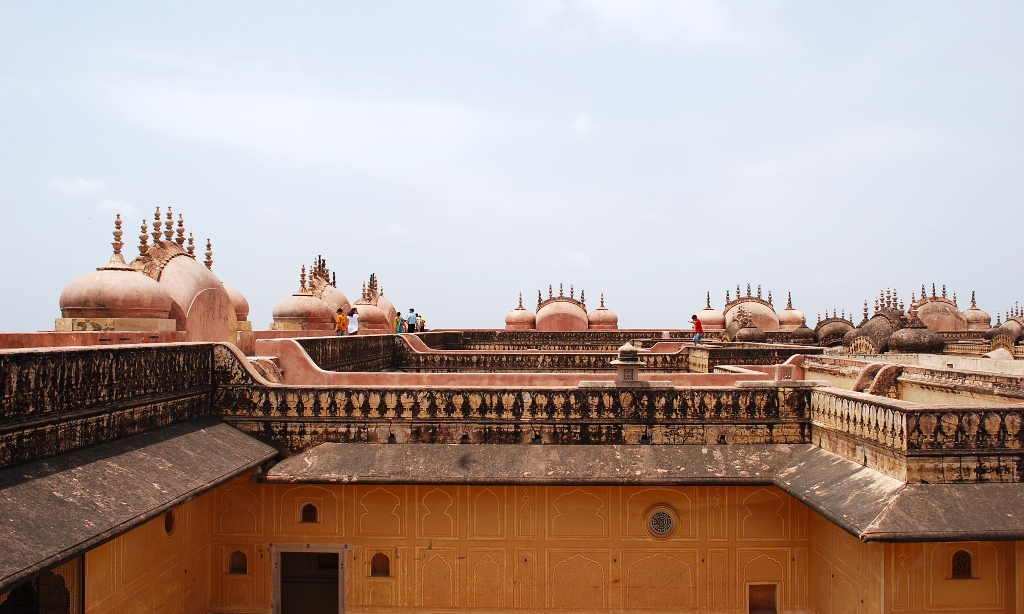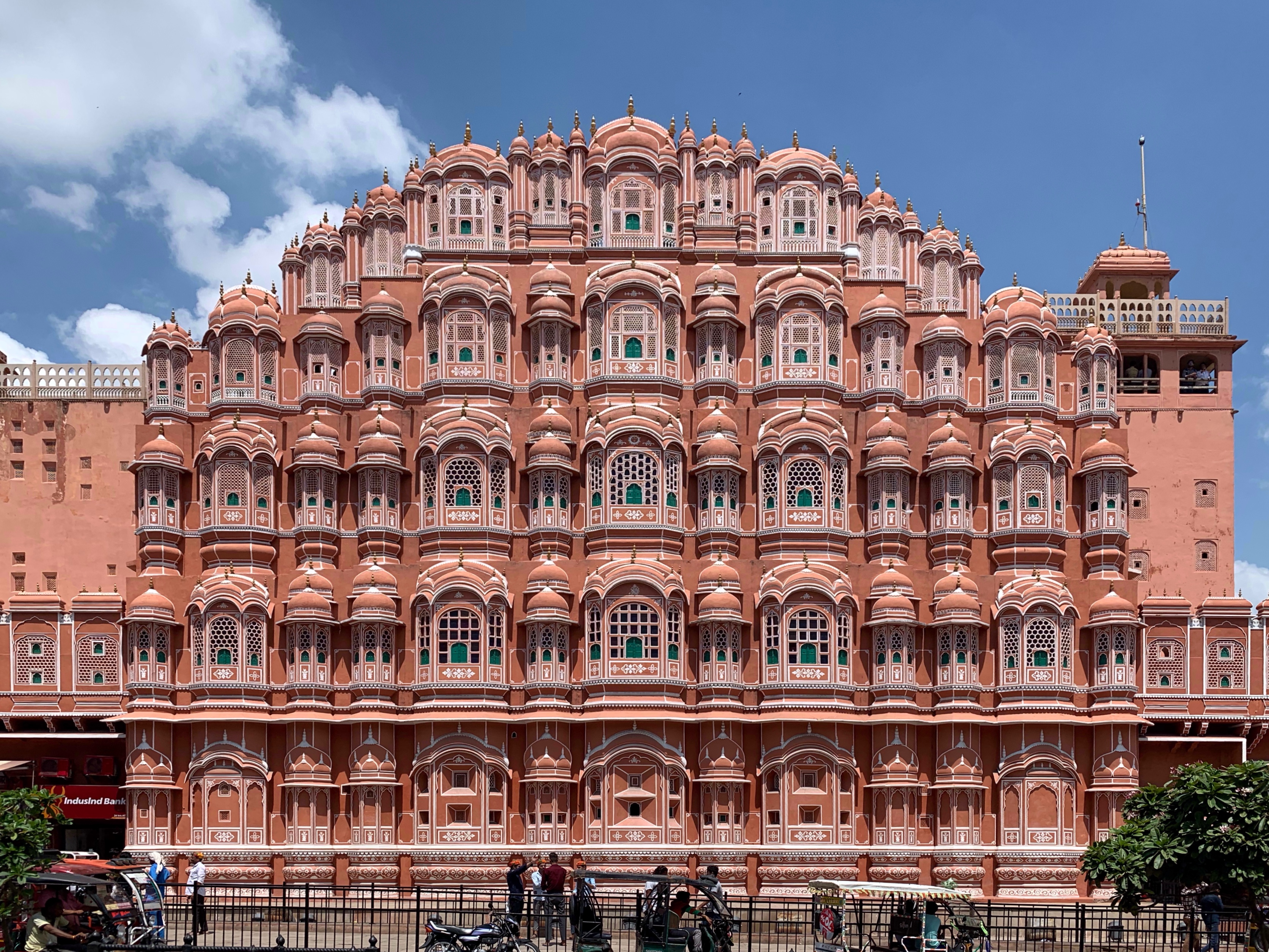Amber Fort, also known as Amer Fort, stands as a magnificent testament to the rich history and architectural brilliance of Rajasthan, India. Perched atop a hill in the town of Amer, about 11 kilometers from Jaipur, this majestic fort-palace complex has witnessed centuries of royal grandeur and political intrigue. The fort's origins can be traced back to 967 CE when Raja Alan Singh of the Chanda clan of Meenas first established a settlement in the area. However, the Amber Fort we see today was primarily constructed in the late 16th century under the reign of Raja Man Singh I, a trusted general of the Mughal Emperor Akbar.
The construction of Amber Fort began in 1592 and continued over several decades, with successive rulers adding their own touches to the grand structure. Raja Man Singh I laid the foundation, but it was his descendants, particularly Jai Singh I in the early 17th century, who significantly expanded and embellished the fort. The fort's architecture seamlessly blends Rajput and Mughal styles, showcasing the cultural synthesis that characterized that era. Built with light-colored sandstone and white marble, the fort's warm, golden hue against the stark landscape has earned it the moniker "India's Golden Palace."
The fort's strategic location atop a hill in the Aravalli range made it an ideal defensive stronghold. Protected by massive ramparts and a series of gates, the most notable being the imposing Suraj Pol (Sun Gate) facing east, the fort's layout comprises four main courtyards, each serving a specific purpose. The first courtyard, Jaleb Chowk, was where returning armies would display their war spoils. The second courtyard houses the Diwan-i-Am where the raja would hear public grievances. The third courtyard contained the Maharaja's private quarters, featuring the stunning Sheesh Mahal and Jai Mandir. The fourth courtyard, reserved for royal women, features intricate designs and hidden passages.
The Sheesh Mahal stands as one of the most captivating features of Amber Fort, showcasing the pinnacle of Rajputana architecture. This remarkable hall is adorned with thousands of mirror pieces on its walls and ceiling, creating a mesmerizing effect when lit by candlelight. According to legend, the Sheesh Mahal was constructed so that the queen, who was forbidden to sleep under the open sky, could observe the stars reflected in the mirrors. The Ganesh Pol, another architectural masterpiece, serves as a magnificent gate covered with detailed frescoes and adorned with mosaics and sculptures, leading to the private palaces of the Maharajas.
The fort's construction employed sophisticated engineering techniques for its time. The walls were constructed using dressed stone masonry with lime mortar, ensuring exceptional durability and strength. An ingenious water harvesting system was incorporated into the design, featuring channels and cascades that directed rainwater into storage tanks, crucial for sustaining life in the arid region. The Sukh Niwas within the fort showcased an early form of air conditioning, achieved through a water cascade over a carved marble screen that cooled the passing air.
Over the centuries, Amber Fort has played host to numerous historical events and royal ceremonies, serving as the capital of the Kachwaha dynasty until 1727. The fort houses the sacred Sila Devi Temple, established when Raja Man Singh I brought the deity's idol from Bengal after a victorious campaign. The temple became a significant place of worship for the royal family, maintaining a tradition of animal sacrifices until the early 20th century. The fort has welcomed many distinguished visitors, including foreign dignitaries and Mughal emperors, continuing to serve as a summer retreat for the royal family even after the capital was moved to Jaipur.
In the present day, Amber Fort has transformed into one of Rajasthan's premier tourist destinations, attracting millions of visitors annually. Its recognition as a UNESCO World Heritage Site in 2013, as part of the "Hill Forts of Rajasthan" group, has further cemented its historical importance. Conservation efforts have focused on preserving and restoring various sections of the fort, ensuring its architectural splendor endures for future generations. Visitors can explore the numerous chambers, courtyards, and gardens, often guided by audio tours that bring the fort's rich history to life. While the traditional elephant ride to the fort's entrance remains popular among tourists, it has faced scrutiny from animal rights advocates. The evening sound and light show provides a spectacular display, illuminating the fort while narrating tales of its glorious past and the valor of Rajput warriors.







